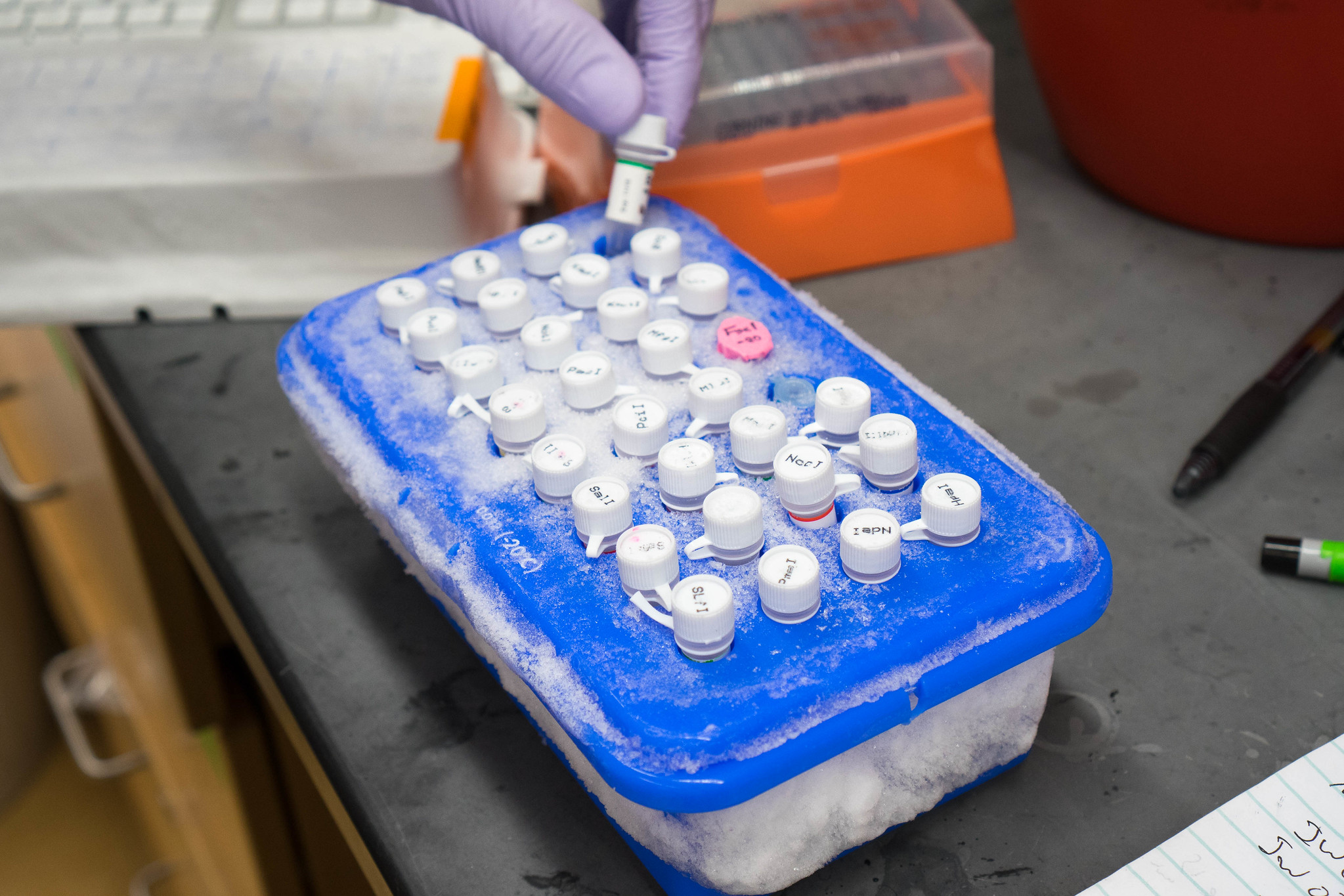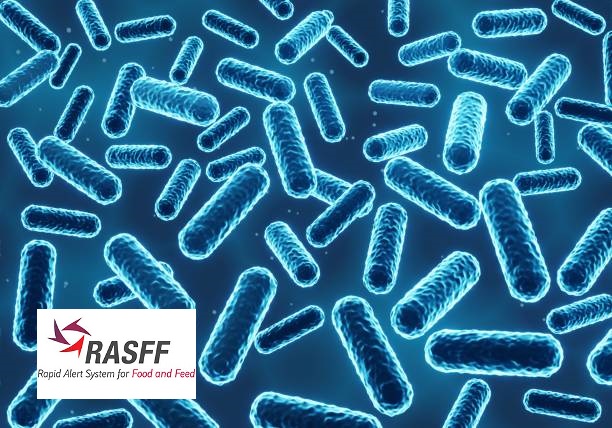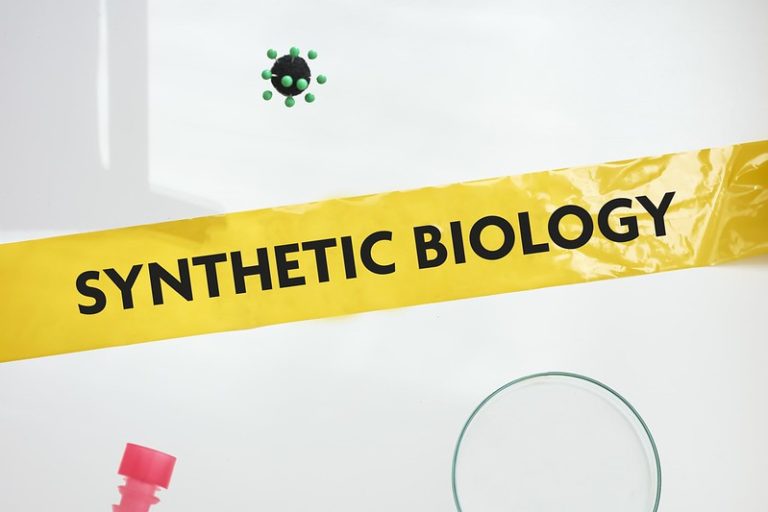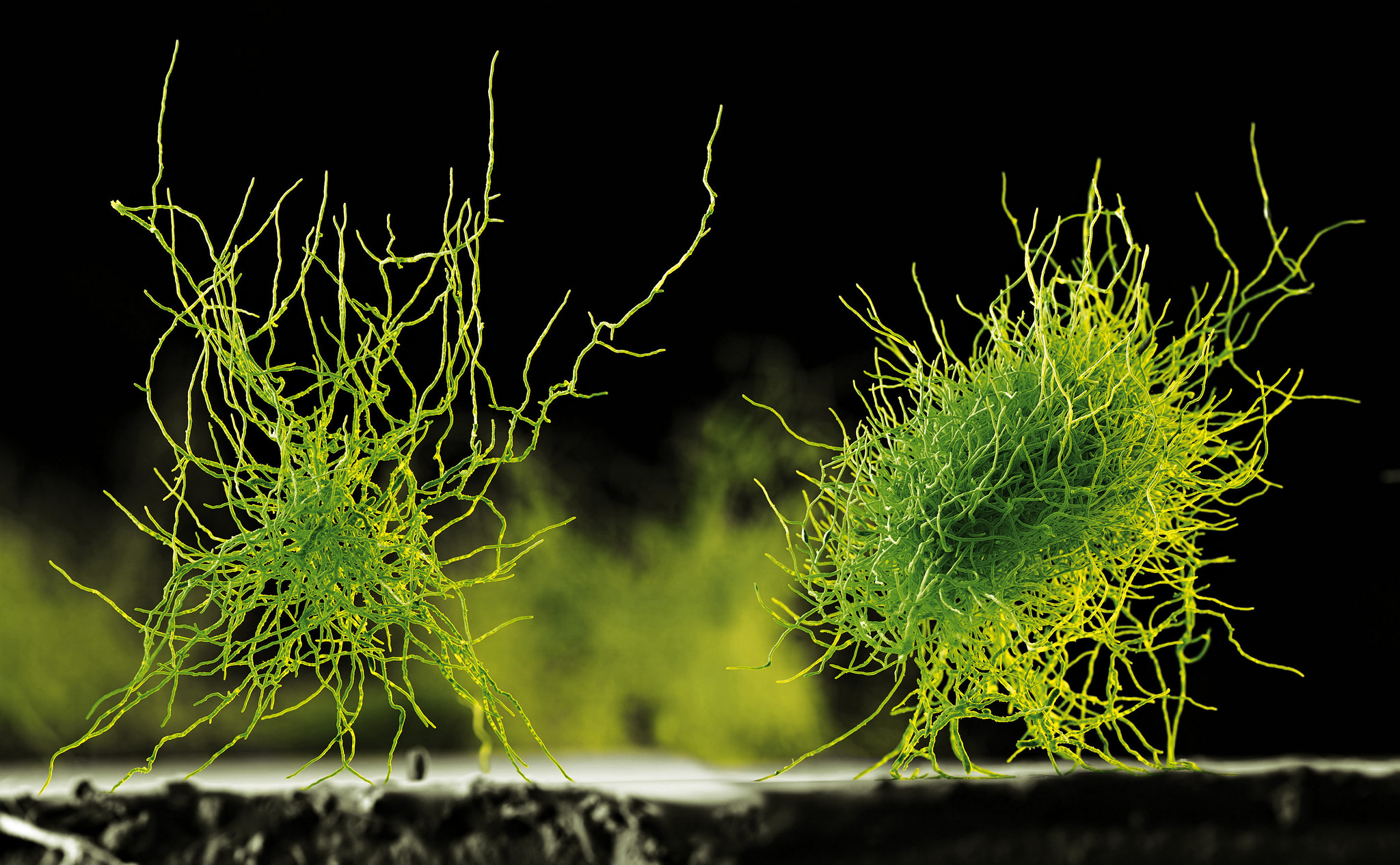News
GMO-derived enzymes used in food and feed

Between 2005 and 2023, the European Food Safety Authority (EFSA) received and studied 601 applications for commercial authorization for enzymes produced by micro-organisms. These proteins, capable of catalyzing chemical reactions, play an important role in the food and feed industry. As part of our investigation, Inf’OGM consulted the 601 dossiers : almost half of them are for enzymes produced by genetically modified micro-organisms (GMMs) !
Bacteria, yeast, fungi, as well as animals and plants, all living organisms produce enzymes. These proteins have a fundamental role : they catalyze the chemical reactions necessary for living things to… live. Over the last few decades, a number of industrial companies have specialized in the production of these enzymes. These latter can be and are used in the “food processing, animal feed, healthcare, textiles, leather processing, detergents and cleaners, agrofuels, cosmetics…” industry [1]. To produce them, manufacturers have their favorite production factories, micro-organisms, whether genetically modified or not.
An industrial production using GMOs, off the radar
In Europe, enzymes used in food or animal feed require a green light from the EFSA. This body therefore provides English-speaking citizens with highly technical dossiers that are freely accessible, but difficult to access. Of the 723 dossiers submitted between 2005 and July 2023 that Inf’OGM was able to study [2], 601 concern enzymes intended for food and feed [3]. The other files concern vitamins or additives. Of these 601 dossiers, 242 concern enzymes produced by genetically modified microorganisms (GMMs) (i.e. 40.3% of the dossiers consulted). 107 dossiers involved micro-organisms specifically declared as non-GMO (i.e. 17% of dossiers consulted). 252 other applications do not provide enough information to know whether the micro-organism used is a GMO or not.
It should be remembered that the users of these enzymes (food chain processors, for example) are not kept informed of the production process. Indeed, since 2006 and a political decision taken by the Council of the European Union, enzyme producers have ahd no legal obligation to label their enzymes marketed as produced by GMOs [4]. 6-phytase and alpha-amylase are two typical examples of enzymes produced by GMMs.
| Name | Number of dossier | GMO | Non GMO | Unknown origin | Number of petitionner |
|---|---|---|---|---|---|
| 6-Phytase | 18 | 13 (76,5 % of the read dossier) | 0 | 4 | 9 |
| Alpha-amylase | 54 | 24 (44,4%) | 12 | 18 | 17 |
| Other (56 enzymes) | 529 | 204 (38,6%) | 95 | 230 | |
| Total | 601 | 242 (40,3%) | 107 | 252 | 137 (50 for the GMO dossier) |
The phytases, an important microbial production
6-Phytase belongs to the phytase family, which includes other enzymes such as 3-phytase, 4-phytase… This is an important enzyme family in the agri-food sector, since phytases have taken 40% of the food enzyme market in recent years. One of their functions is to break down complex phytate molecules into phosphorus. Phosphorus is an important mineral salt for animal growth. However, in order to be metabolized by animals, this phosphorus must be available via the diet. So-called biological availability has become a key issue for the animal feed industry.
In plants, most of this phosphorus is stored in a complex molecule known as phytic acid, or phytate. Any animal having a plant-based diet must therefore be capable of degrading these phytates in order to recover and utilize phosphorus. In ruminant animals, this degradation occurs naturally via enzymes produced by their microflora. But in poultry or pigs, for example, which are non-ruminant animals, this enzyme is not sufficiently present, or under inadequate conditions, for the natural degradation into phosphorus of phytates supplied by plants to be sufficient. While some plants, such as wheat or rye, naturally produce sufficient phytase, the concern is that it does not sufficiently release phosphorus from the raw materials, but also that “this natural phytase is partly destroyed by food manufacturing processes” [5]. It is therefore necessary to supplement animal feed. There are two possibilities :
- The first is to add phosphorus directly to the feed. The problem with this approach is that phosphorus is the dosage and release via animal excrement, making it an environmental pollutant. Between 60% and 80% of the phosphorus ingested by pigs is excreted.
- The second is to add phytases directly to the feed. In this way, the phosphorus present in animal feed becomes efficiently accessible and utilized by the animals. As plant phytases are “not very resistant to certain heat treatments frequently used in animal feed“, the industrial production of phytases quickly turned to the use of micro-organisms [6].
Several fungi have been genetically modified, mainly by transgenesis, to express this enzyme. In the 17 dossiers submitted by nine companies [7] concerning the enzyme 6-Phytase, 13 involve the use or GMM. These are five different fungi or different strains of one fungi [8].
The alpha-amylase, an enzyme « designed » for the industry
Alpha-amylase is one of the star enzymes produced industrially by micro-organisms. It breaks down starch (a complex sugar) into several simple sugars, such as glucose, fructose and maltose. This process occurs naturally, as in saliva, which contains amylase to break down starch into maltose. The industrial uses resulting from this reaction are numerous : food and feed, textiles, paper, even industrial detergents.
The production of alpha-amylase by means of microorganisms has received industrial preference due to the financial lower cost of production as well as the greater ease of manipulating microorganisms to make them produce the desired alpha-amylase [9]. Among the characteristics sought by the processing industry are enzyme stability at various temperatures or salt concentrations. The main industrial use of alpha-amylase is therefore in the transformation of starch into glucose or fructose syrup. In the human food industry, this enzyme can be used in “bakery, beer brewing, cake, fruit juice or starch production“, as well as for pre-digesting animal feed. The importance of this enzyme in industrial manufacturing processes gives it a special place in the applications processed by the EFSA. Inf’OGM was able to consult 56 applications, submitted by 17 different companies. [10]. 24 of these applications involve GMMs, 12 involve non-GM microorganisms and 18 do not allow to formally establish the GM or non-GM status of the used microorganism.
A safeguarded non-GMM production ?
Inf’OGM’s monitoring of applications submitted to the EFSA gives a partial picture of how enzymes are produced. While many are naturally produced by animals, plants and/or micro-organisms, the enzyme industry has nevertheless favored the latter. As we have seen, the reason is mainly economic, since working with micro-organisms is regularly described as less costly. The advent of genetic modification techniques has also strengthened the position of these micro-organisms, as they are faster to work with. The speed of multiplication of a micro-organism is indeed incomparable with that of plants or animals.
This probably partial view provided by a reading of the dossiers submitted to the EFSA raises a question : is it possible that such or such an enzyme is only produced by genetically modified micro-organisms ? Apart from the uncertainties associated with dossiers that fail to provide sufficient information, some enzymes appear to have been submitted for authorization only when produced by GMMs. This is the case for 35 enzymes whose scientific name is given in a note to spare the reader who has not studied biology [11].
[1] Mordor Intelligent, « Industrial Enzymes Market Size and Share Analysis – Growth Trends and Forecasts (2023 – 2028) » (in french), 2023.
[2] , « Micro-organismes OGM : des usines de production bien discrètes », Inf’OGM, 13 juillet 2023.
[3] EFSA is only interested in enzymes intended for human and animal consumption, but the production of enzymes with GMO or non-GMO micro-organisms concerns other industrial fields, such as pharmaceuticals, agriculture (biocontrol), cosmetics, paints, detergents, agro-fuels, the paper industry, etc. A further investigation of these other uses would be worthwhile.
[4] , « Les micro-organismes génétiquement modifiés, part sombre du dossier OGM », Inf’OGM, 5 juillet 2022.
[5] MTD, « Utilisation de phytases, de hosphates alimentaires hautement digestibles et autres additifs » (in french), October 2019.
[6] Jean dit Bailleul, P. et al., « Méta-analyse de l’effet de la phytase dans les aliments pour porcs » (in french), Journées Rech. Porcine en France, 33, 43-48, 2001
[7] Classified by number of applications (between brackets) :
DSM Nutritional Products (5), Roal Oy (3), Danisco Animal Nutrition (2), Huvepharma AD (2), Andrés Pintaluba SA (1), BASF (1), Nutrex (1), Syngenta (1), Victory Enzymes GmbH (1).
[8] Aspergillus oryzae, Komagataella phaffii, Pichia pastoris, Schizosaccharomyces pombe, Trichoderma reesei.
[9] de Souza PM, de Oliveira Magalhães P., « Application of microbial α-amylase in industry – A review », Braz J Microbiol, October 2010.
[10] Classified by number of applications (between brackets) :
Danisco (13), Novozymes A/S (12), Amano Enzyme Inc (7), DSM Food Specialties B.V. (5), Association of Manufacturers and Formulators of Enzyme Products (4), Intertek Scientific & Regulatory Consultancy (2), Kemin Europa N.V. (2), Sunson Industry Group (2), AB Enzymes (1), Advanced Enzyme Technologies Ltd (1), BASF Enzymes LLC (1), Biozyme (1), Enmex SA de CV, a Kerry Company (1), Framelco B.V. (1), Hayashibara Co (1), HBI Enzymes Inc. (1), Nagase GmBH (1).
[11] Classified by alphabetical order, these are the following enzymes :
4-Phytase, Acetolactate decarboxylase, Acid prolyl endopeptidase, Acylglycerol lipase, Alpha, alpha-trehalase, Amyloglucosidase, Aqualysin 1, Arabinofuranosidase, Asparaginase, Beta-mannanase, Carboxypeptidase C, Cellobiose phosphorylase, Chitinase, Chymosin, Chymotrypsin, D-allulose 3-epimerase, D-Fructose 4-Epimerase, D-tagatose-epimerase SD16, Endothiapepsin, Glucan 1,4-alpha-glucosidase, Glucan 1,4-alpha-maltohydrolase, Glucan 1,4-alpha-maltotetraohydrolase, Hexose oxidase, Invertase, Lipase, Lysophospholipase, Maltogenic amylase, Microbial collagenase, Peroxidase, Phospholipase A1, Phospholipase A2, Phospholipase C, Serine endopeptidase, Serine protease, Sucrose phosphorylase.











